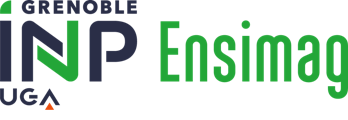Number of hours
- Lectures 18.0
- Tutorials 15.0
ECTS
ECTS 1.25
Goal(s)
The increasing use in most professional activities of computing infrastructure with open networks, that are subject to diverse of threats -some automated-, have made security a major issue.
Coupled to the course "network security", this module presents the coding and cryptographic technologies used in practice to guarantee the integrity of communications, and their effective applications in telecommunications. curité appliquée seront abordées.
Contact Jean-Louis ROCH
Content(s)
Partie 1. Technologies de codage numérique et intégrité des communications :
1. Introduction: basic cryptology technologues? Symmetric cipher (OTP, AES). Asymetric encryption( (ECDLP/El Gamal). One-way hash functions and pseudo random generator.
2. Error detection in networks: CRC encoding and decoding (LFSR). Examples (Ethernet and GSM).
3. Error correction by interpolation. Reed-Solomon coding and decoding. Application.
4. Burst and interleaving. Applications: CIRC coding for CD and DVD; RAID disks.
5. Application to correlation attacks. Exemple: Siegenthaler attack on GSM.
The part 2 ("applied security") is taught in the course "network security".
Prerequisites
Basics in Applied probability, linear algebra and numerical methods (1A / L3),
Information theory; algorithms; architecture and networks;
written examination (1h30)(E)
N1=E1
N2=E2
JG Dumas, JL Roch, E Tannier, S Varrette, Théorie des Codes, Dunod Sciences Sup. 2007
James Massey. Applied Digital Information Theory (vol I et II) ETZH University.
G. Battail, Théorie de l’information : application aux techniques de communication,
collection pédagogique de Télécommunication, MASSON, 1997
Louis Wehenkel, Théorie de l’Information et du codage, Université de Liege, 2003



